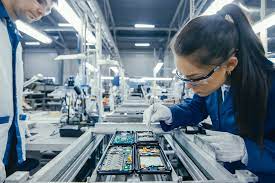After etching, the turnkey pcb assembly goes through component placement and assembly. Surface-mount technology (SMT) is commonly used to attach tiny components to the board. Precision is the name of the game here, as the placement of these components can’t afford any mistakes. Advanced robotic assembly machines meticulously position and solder these components to ensure optimal performance.
Quality Control: The Final Checkpoint
Every PCB undergoes rigorous quality control procedures. Automated testing equipment is used to check for connectivity, shorts, and other potential defects. Any discrepancies are flagged for manual inspection and correction. This meticulous testing ensures that only the highest-quality PCBs make their way into our electronic devices.
A Bright Future for PCB Fabrication
The PCB fabrication process continues to evolve, with innovations such as 3D printing and flexible electronics paving the way for even more compact and versatile PCBs. As the demand for smaller, more powerful electronic devices grows, the role of PCB fabrication becomes increasingly critical.
In conclusion, while Printed Circuit Board fabrication may often remain hidden within the sleek casings of our favorite devices, it’s a process that underpins modern technology. It’s the art and science behind the electronic marvels we use daily, and as technology advances, so too will the precision and innovation within PCB fabrication. Whether in consumer electronics, medical devices, or automotive systems, PCBs will remain at the heart of our ever-evolving digital world.










More Stories
The Rise of Silicone Sex Dolls: A New Era in Adult Companionship
Understanding IPTV: The Future of Television
The Allure of Night Life: A Journey into the After-Dark Realm